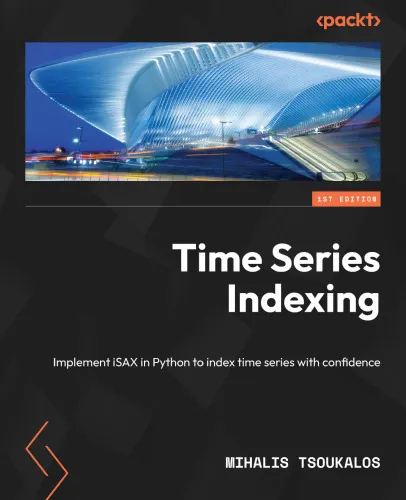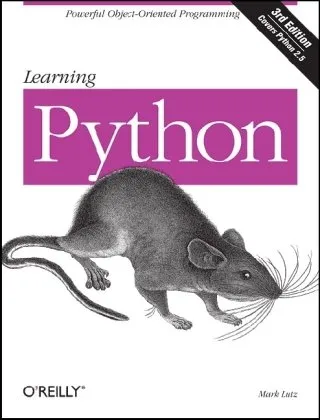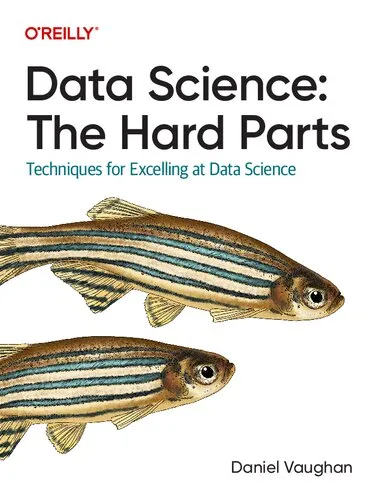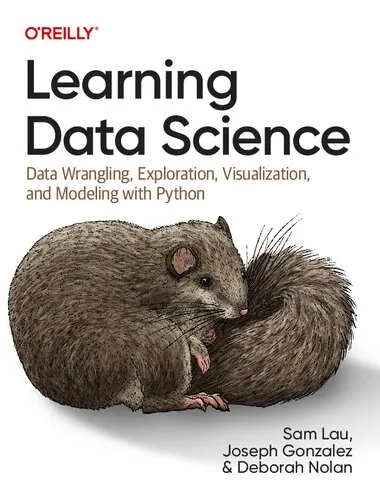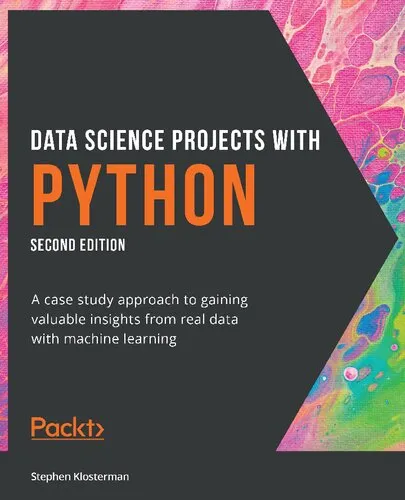Time Series Indexing: Implement iSAX in Python to index time series with confidence
4.0
Reviews from our users

You Can Ask your questions from this book's AI after Login
Each download or ask from book AI costs 2 points. To earn more free points, please visit the Points Guide Page and complete some valuable actions.Related Refrences:
Analytical Summary
In “Time Series Indexing: Implement iSAX in Python to index time series with confidence,” Mihalis Tsoukalos offers an authoritative exploration of a powerful and scalable approach to handling time series data. Written for data scientists, engineers, and researchers, this book demystifies the iSAX (Indexable Symbolic Aggregate approXimation) representation in the Python programming language, giving readers both theoretical understanding and hands-on implementation skills.
Time series data is ubiquitous in modern analytics, arising in domains from finance, IoT sensor networks, and environmental monitoring to biomedical research and cybersecurity. Traditional indexing methods often fail to balance accuracy, scalability, and computational efficiency when faced with large volumes of time series datasets. The iSAX algorithm fills this gap by providing symbolic approximations that enable fast indexing and search capabilities without losing critical structural patterns in the data.
This book blends academic rigor with practical guidance. You will encounter comprehensive discussions on the mathematics behind symbolic aggregation, the constraints of high-dimensional data, and the trade-offs between resolution and performance. Each chapter integrates Python code samples that guide you step-by-step from raw time series input to an optimized index ready for data mining, anomaly detection, or similarity search tasks.
Key Takeaways
Readers will leave with a robust understanding of how to implement and leverage the iSAX algorithm in Python, ensuring their time series analysis workflows are both scalable and precise.
You will gain a grasp of symbolic representations and why they matter for indexing large datasets.
Understand step-by-step procedures for preparing, segmenting, and approximating time series data.
Learn to fine-tune iSAX word sizes and cardinalities for performance optimization.
Discover how to evaluate the accuracy and speed of your indexing approach using empirical testing.
Recognize practical applications across diverse domains where time series indexing leads to tangible benefits.
Memorable Quotes
“Indexing time series efficiently is not a luxury; it is a necessity in the era of big data.”Unknown
“The iSAX representation compresses complexity into clarity, enabling speed without sacrificing insight.”Unknown
“Python offers the flexibility and accessibility needed to bring advanced indexing algorithms to the hands of practitioners.”Unknown
Why This Book Matters
This work fills a critical knowledge gap for professionals facing the challenge of managing and searching vast time series datasets quickly and accurately.
Whether your data comes from stock market feeds, industrial sensors, climate models, or server logs, inefficient indexing can severely limit analytic potential. This book equips you with cutting-edge techniques and accessible Python code so you can integrate iSAX into your projects and achieve lightning-fast searches on massive datasets.
The author’s focus on precise, reproducible methods reflects the level of care necessary when dealing with complex, high-dimensional data. By uniting algorithmic theory with practical coding advice, Mihalis Tsoukalos makes iSAX accessible to both academics and industry professionals.
Information about potential awards or formal recognitions for the book is unavailable, as no reliable public source currently confirms such details.
Inspiring Conclusion
“Time Series Indexing: Implement iSAX in Python to index time series with confidence” serves as both a technical manual and a trusted companion for serious learners navigating the world of time series analysis.
By mastering the principles and practical steps outlined in this book, you will be able to construct efficient indexing solutions that extract meaningful insights from high-volume data sources. The careful blend of theory, examples, and Python code empowers you to broaden your analytical toolkit.
If you are ready to enhance your skills, deepen your understanding, and streamline your workflow, take the next step: read the book, engage with the methods, share your applications, and discuss your findings with colleagues and the broader data science community. The journey into effective time series indexing begins here.
Free Direct Download
You Can Download this book after Login
Accessing books through legal platforms and public libraries not only supports the rights of authors and publishers but also contributes to the sustainability of reading culture. Before downloading, please take a moment to consider these options.
Find this book on other platforms:
WorldCat helps you find books in libraries worldwide.
See ratings, reviews, and discussions on Goodreads.
Find and buy rare or used books on AbeBooks.
1034
بازدید4.0
امتیاز50
نظر98%
رضایتReviews:
4.0
Based on 0 users review
"کیفیت چاپ عالی بود، خیلی راضیام"
Questions & Answers
Ask questions about this book or help others by answering
No questions yet. Be the first to ask!
